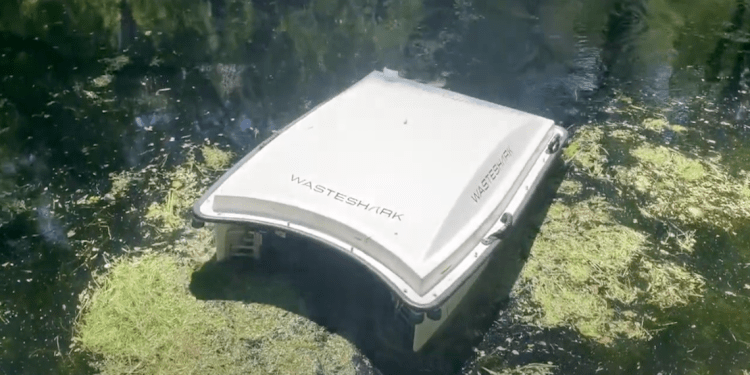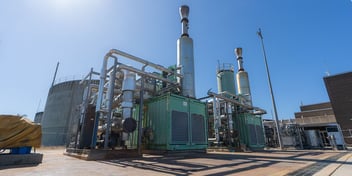Shark feasts on waste in Sydney wharf

The war on waste has hit Sydney's Cockle Bay Wharf with the Australian-first release of the WasteShark – a 1.5 m aquadrone that cleans litter and debris from water as it glides across the surface.
Developed by RanMarine Technology in the Netherlands, the WasteShark combines an array of drone technologies to enable safer and more effective water waste collection.
RanMarine Technology Sales Director Mark Bayly said the new aquadrone was developed to create a more efficient and environmentally friendly solution to waterway waste removal.
“Our Founder and CEO, Richard Hardiman, observed a couple of sanitation workers cleaning trash from the water surface at the V&A Waterfront in Cape Town, South Africa where we are from,” he said.
“They were in a diesel powered boat and were using pool-cleaning nets to remove the debris. It struck him that there must be a more efficient and eco-friendly way of doing this work.
“He assumed that there would be more advanced strategies in place in first world countries, but after some research it appeared that was not the case. He then set his mind to developing an alternative and the seeds for the WasteShark were sown.”
[embed]https://www.youtube.com/watch?v=mFOi2QsZ3-w&t=2s[/embed]
The WasteShark has been designed to clean both manmade and biomass floating debris from the water surface of marinas, harbours and ports as well as inland water bodies such as dams, lakes and reservoirs, Bayly said.
“Powered by lithium-ion batteries which are the most efficient and eco-friendly options available, the ASV's (Autonomous Surface Vessels) are controlled from the shore in either manual or autonomous mode via 4G connection,” Bayly explained.
When fitted with Eureka Sensors, the aquadrone also has the ability to record a range of surface water health data elements.
“The autonomous WasteShark is designed to be deployed with preset mission routes on your chosen waterbody,” Bayly said.
“By accessing the customer portal, selecting the operating route and predetermining its path, you are able to ensure that you cover the region you require for waste and/or data collection.
“In addition, the drone uses GPS routes to navigate to the desired areas and to return home. A LiDAR unit can be added to the device to increase both safety (collision avoidance) and enhanced data capture from the environment.”
The WasteShark includes: lithium ion phosphate 600 W battery cells with battery management system, autonomous navigation software, in-hull thrusters for on-axis turning and speeds up to 3 kph, GPS and LiDAR for collision avoidance and navigation and a sliding basket system for trash removal.
Bayly said RanMarine are also considering ways to enhance their products and develop new ones to take on greater challenges.
“We are currently developing a 24/7, fully autonomous, modular SharkPod where multiple drones will be able to charge, complete cleaning missions, return to empty their baskets and redeploy on a continuous basis,” Bayly said.
“Our R&D department is hard at work on a "MegaShark" build and we are also very focused on developing the technology to clear oil spills and cyanobacteria and similar algae.
NSW Minister for Planning and Public Spaces Rob Stokes welcomed the first WasteShark to Cockle Bay Wharf last month.
“Everyone wants a safe and sparkling harbour and I’m delighted to welcome the latest weapon in the war on waste,” Stokes said.
“The WasteShark can devour up to 160 kilos in one sitting — including plastics, vegetation, floating debris, chemicals, marine fuels and oils that shouldn’t be in our waterways.
“This is an environmentally friendly solution to cleaning our waterways, powered by batteries and emitting zero emissions.”

